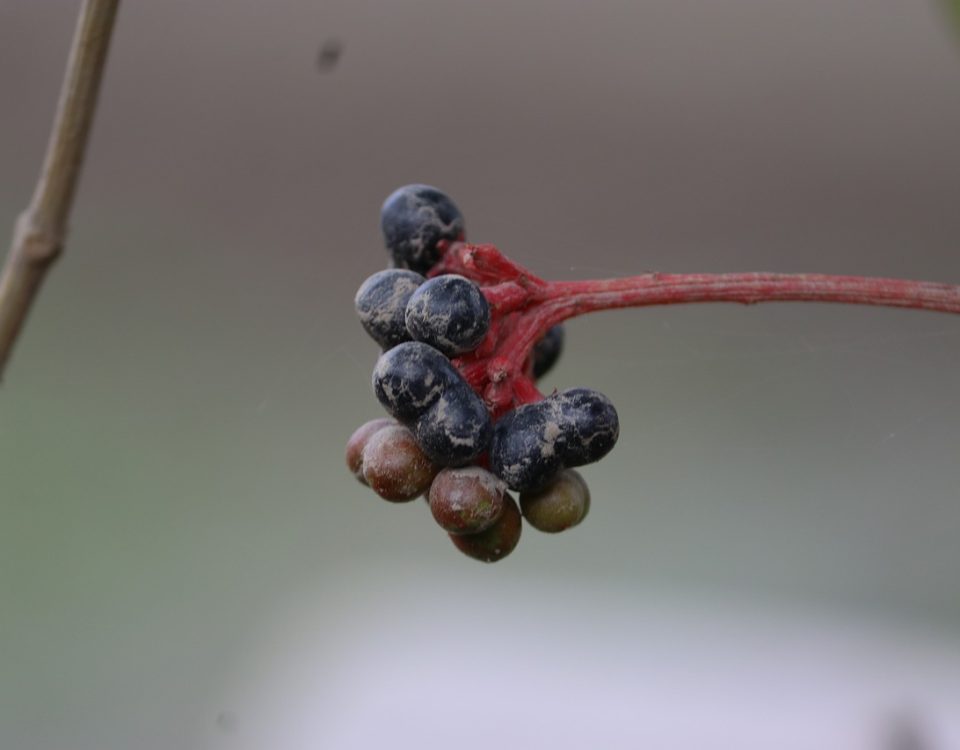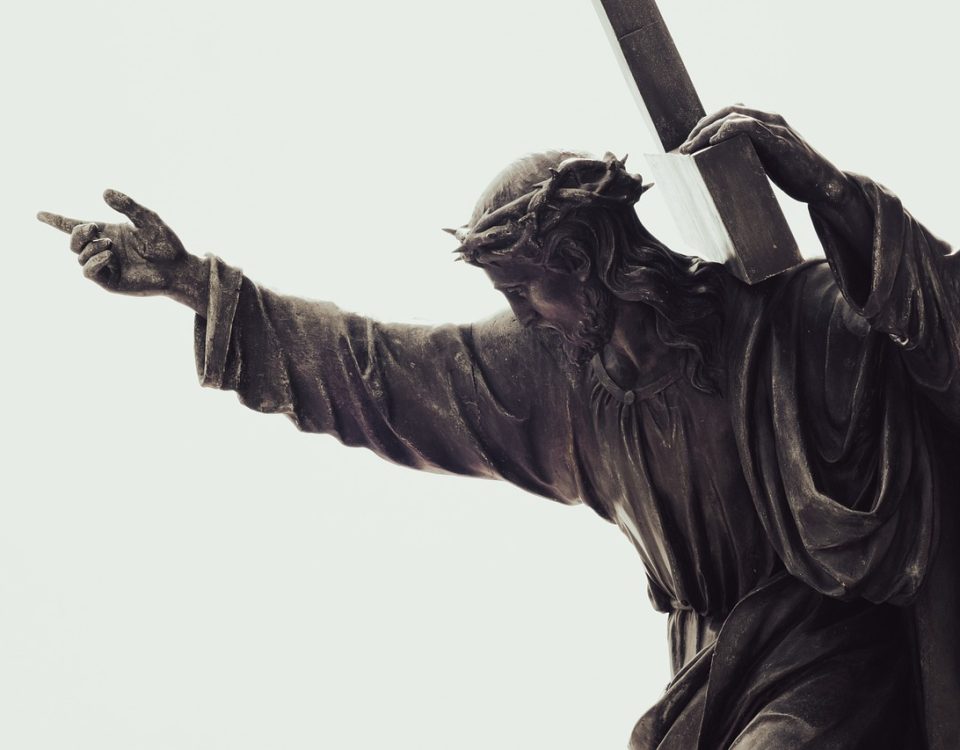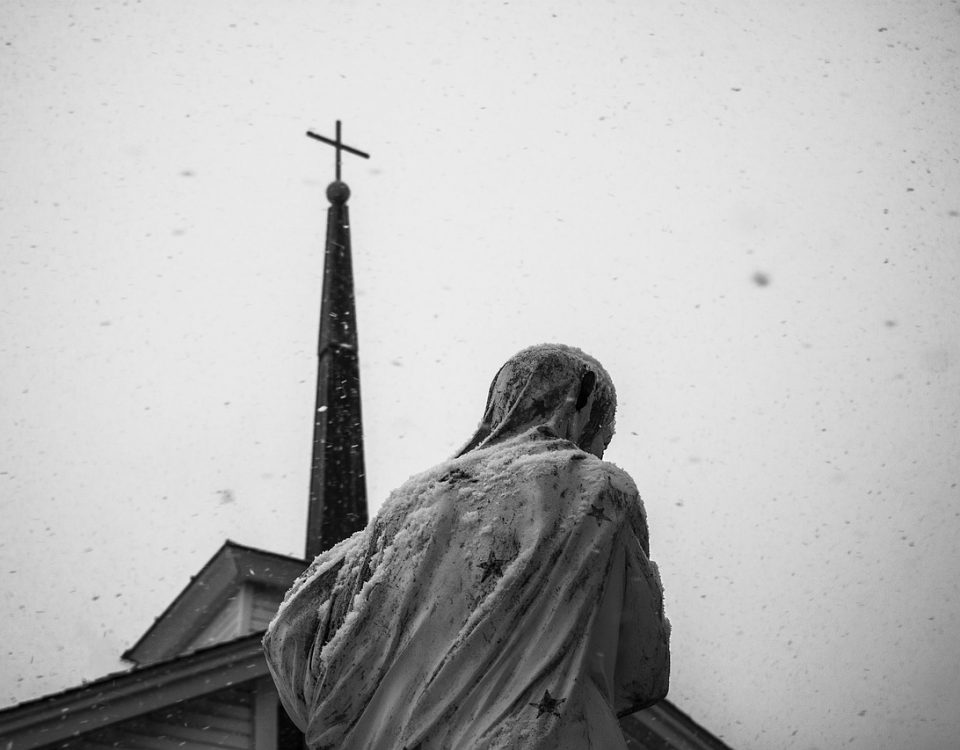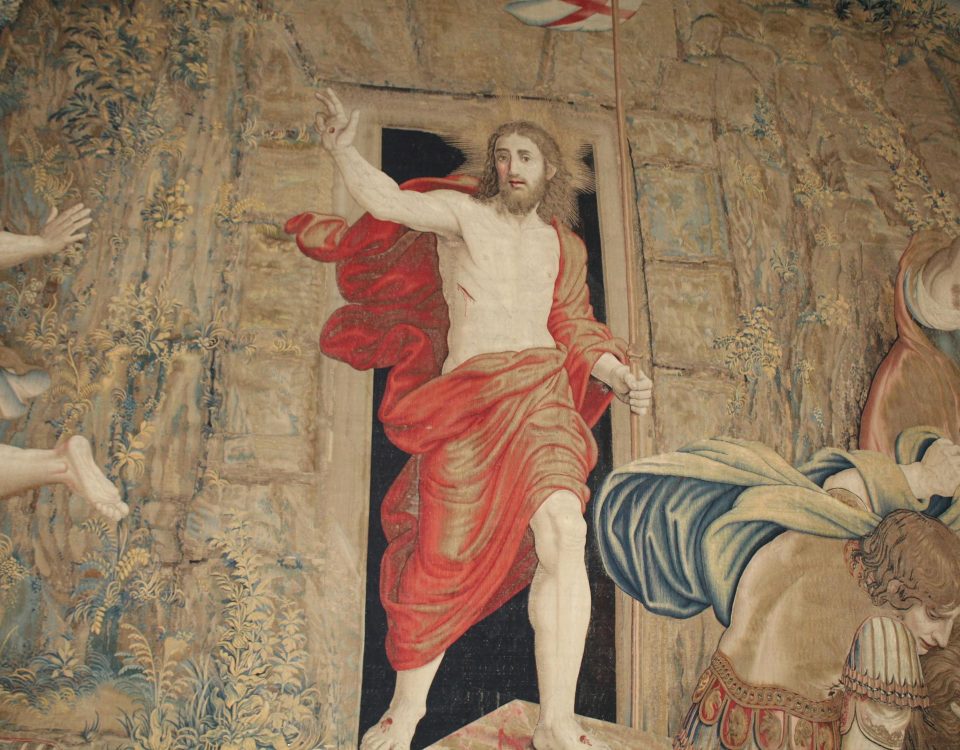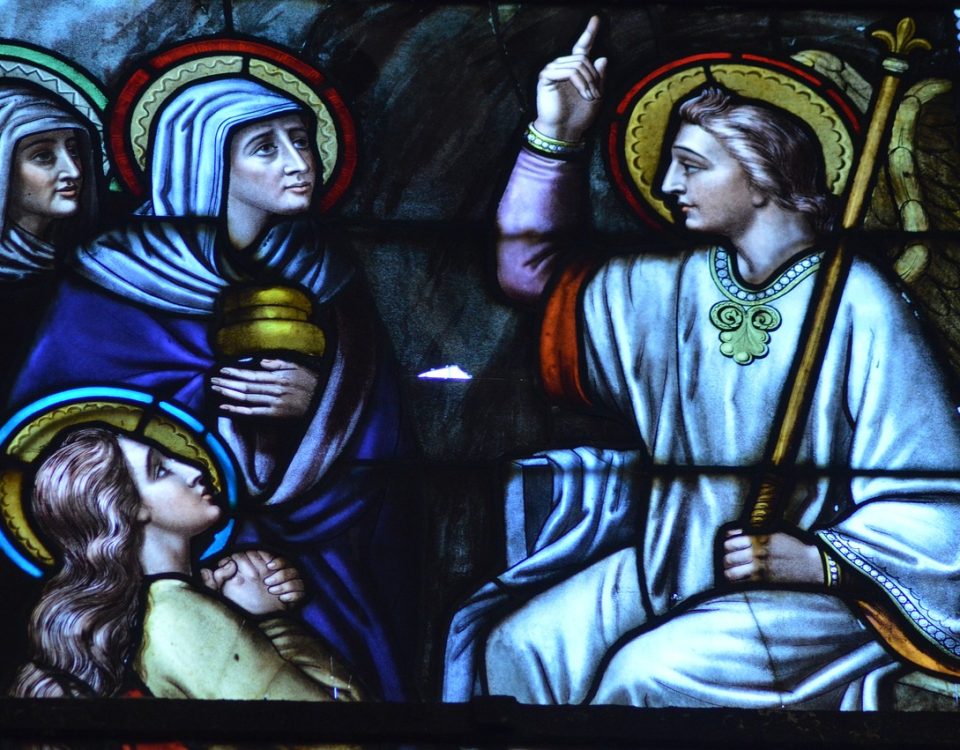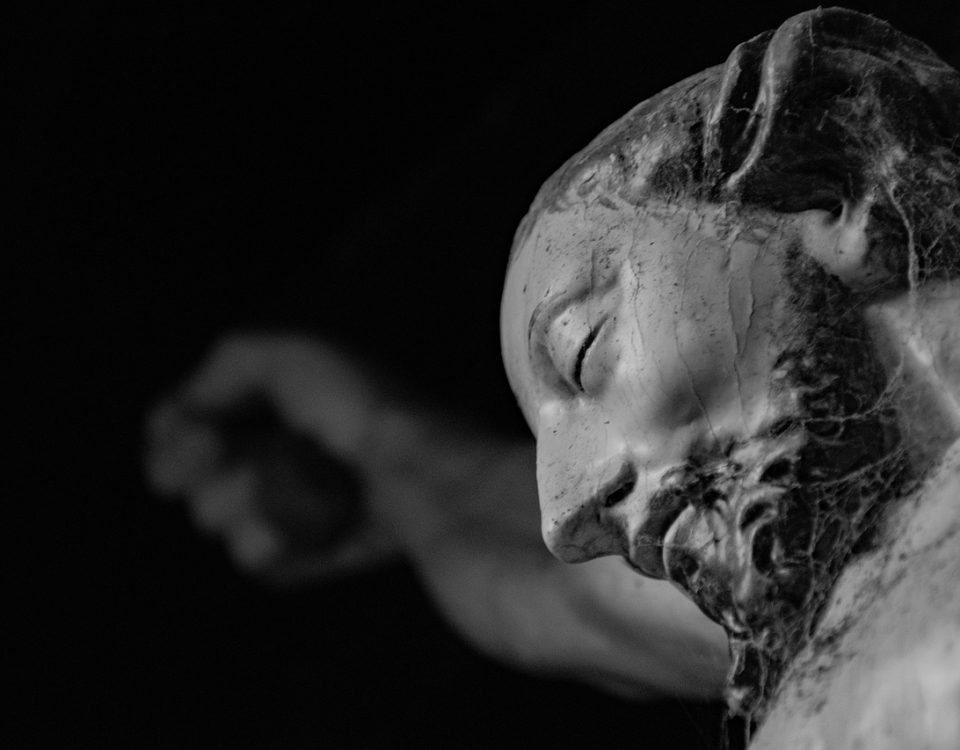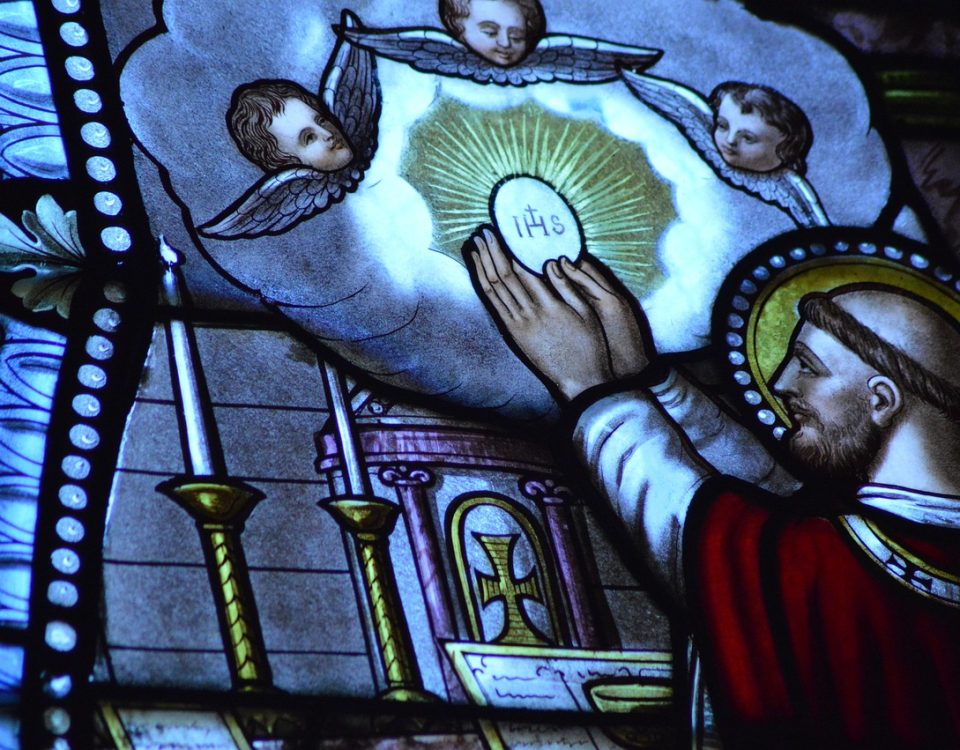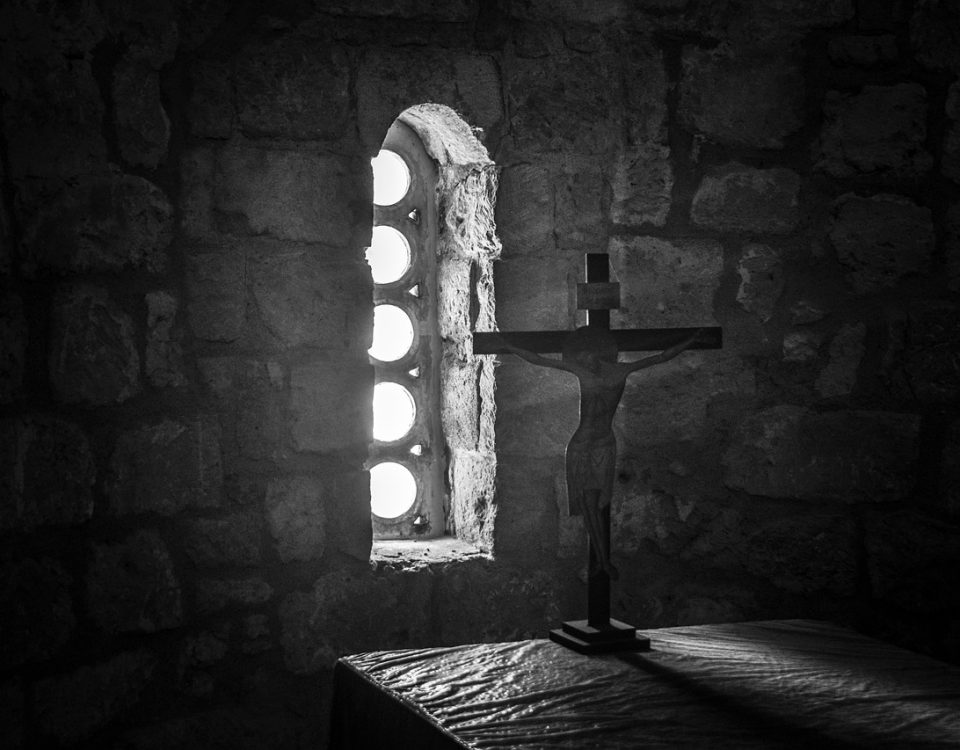I was walking with Peter, my son, through the museum the other day; he has an eye for beauty. I enjoy talking with him about the paintings we see.
We were at the Kimball, and there is a painting there by Jacopo Bassano, the Italian master of the late Renaissance.[1] The painting is of the supper at Emmaus, that miraculous supper after the Resurrection, of that moment when Jesus—hitherto mysteriously unrecognizable—“took the bread and blessed and broke it, and gave it to them;” of that moment, Luke writes, when “they recognized him;” his hitherto ignorant disciples unable to see, suddenly they see—the moment the bread breaks. That moment, miraculous indeed, that’s the painting’s subject, that moment of recognition, of seeing.[2]
But the painting shows more. A meditation upon that miraculous moment, it does more than merely depict the biblical story; that’s what good art does, it helps us see more. At the sides of the painting, on either end of the table, Bassano paints an innkeeper and a waiter. Such figures are not in the biblical story. The innkeeper, his face stern and his moneybag full, he looks right at the miracle, right through the miracle to his waiter, and sees nothing; and the waiter, he never takes his eyes off the tray, off the food he’s carrying; he feels and fears the eyes of his master, perhaps. Whatever the reason his eyes are cast down, he doesn’t see the miracle either; he doesn’t recognize Jesus in the breaking of the bread either. Only the two disciples, whose hearts burned with the word of God, see Jesus; to the innkeeper and the waiter, there was nothing to see, no miracle at all, just a table to be cleared. The disciples saw; the innkeeper and the waiter did not. The place had become a basilica, the table an altar, the bread, God; that’s Luke’s point. But not everyone saw it; that’s Bassano’s point. The question is whether you see. You may see or you may not see, but that doesn’t settle the question of what’s real, what’s true. The believers, the haloed, say they see. But do you? That you say you don’t see doesn’t settle it. The question just keep getting thrown into our faces, into the faces of doubters and unbelievers—Why can’t you see? You can’t see God? Does that mean there’s no God? If a blind man declares there’s no sun, is the sun not real? Why can’t you see? What does it mean to see? It’s the unnerving question behind every atheist’s irreverent confidence; he can’t hide it; that’s why he lashes out the way he does. But it’s also the unnerving question of faith, even for we believers, this first question of Advent. Why can’t you see?
The call is to see, to be prepared for the coming of the Son of Man. And, as in that painting by Bassano, to many there will be nothing to see at all, nothing extraordinary, no hint at all of God’s nearness, of his coming. “As it was in the days of Noah,” Jesus says; only Noah was clued in, only he saw. “Two women will be grinding at the mill; one will be taken, and one will be left.”[3] Believer and unbeliever work together, stand next to each other, share the same space, but one sees while the other doesn’t. One is taken, the other is left; this, by the way, is not about some silly Protestant notion of rapture, but about what the believer sees and the believer’s destiny. It’s about what happens when believers finally learn how to treat the world; as Paul said, when we learn how to deal with the world as if we had no dealings with it because the “form of this world is passing away.”[4] It’s about what happens when we finally see that God and his kingdom are more real and more near than your kingdom and the ego you’ve made your god and all the glamour and all the kingdoms of this visible world; when you see the coming of the Son of Man, realizing he’s come sooner than you think, now in fact. If only you can see him.
This really is the first challenge of Advent—to see, to pray to see. We believe in “things visible and invisible,” we say in the Creed.[5] But do we really? To see the Eucharist, to see the worship of God, to hear these ancient words so full of truth and Spirit, but to see nothing, to think you see nothing, to get bored with it, to look at your watch and think we’ve gone on too long—Why can’t you see? To see your spouse, your children, to see them as the gifts they are, but to falter in constancy, in your love and devotion, to cheat, to betray, to ruin it all for selfish pleasure—Why can’t you see? To see the good of service, the good of being a servant, the beauty of humbleness and smallness, the ugliness of fame and celebrity, to be too busy to help—Why can’t you see? To see the beauty of the poor, their sacredness, to see those heavenly ambassadors still on our street corners, homeless, cold. I didn’t see a man just the other day; I saw him, but I didn’t see him. I’m sorry. What can’t I see? This, friends, is what I think these readings are about, what I think the Church wants us to think about—whether we can see. It’s not about silly apocalyptic speculation; it’s about whether we’re the sort of people that can see the kingdom of God at all—now, never mind whenever he comes again in glory, for then even the wicked will see; filled with trembling regret, even they will see. But now, why can’t you see? Why can’t we see? That’s what we must pray for this Advent: we must pray to see. For how else can we hope to see Christ if we don’t first ask him to burn our hearts with his words, to change us, and give us new eyes? For how can we ever prepare for Christmas with our eyes closed? If we don’t pray God to open them? May he open mine. May he open yours too. So that we can finally see—that beauty we desire, the beauty that is Christ. Amen.
[1] Jacopo Bassano, “The Supper at Emmaus” (1538) at the Kimball Art Museum, Fort Worth, Texas
[2] Luke 24:30-32
[3] Matthew 24:38-41
[4] 1 Corinthians 7:31
[5] The Nicene Creed
© 2022 Rev. Joshua J. Whitfield



